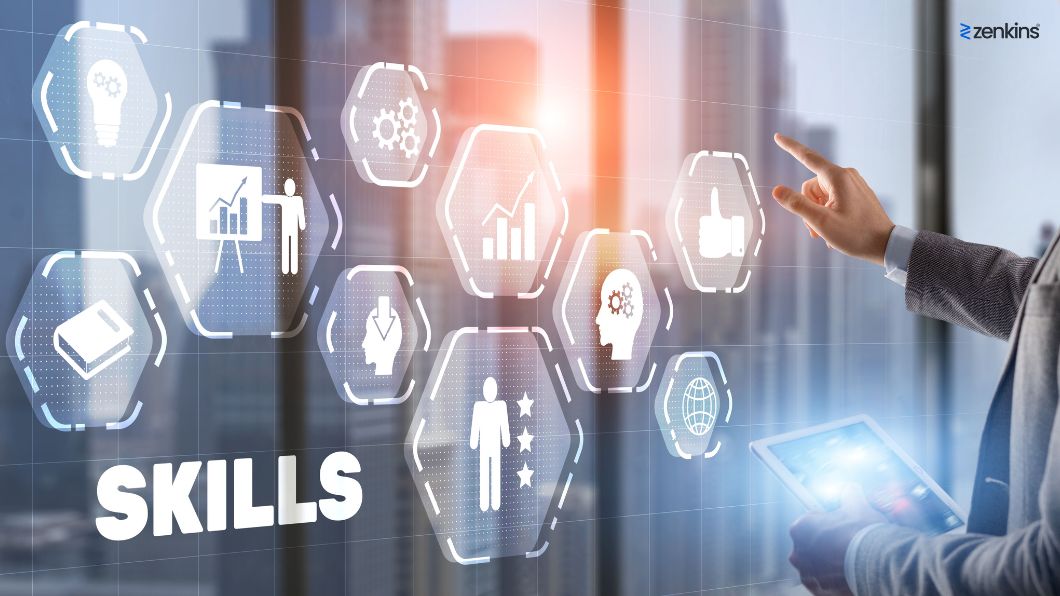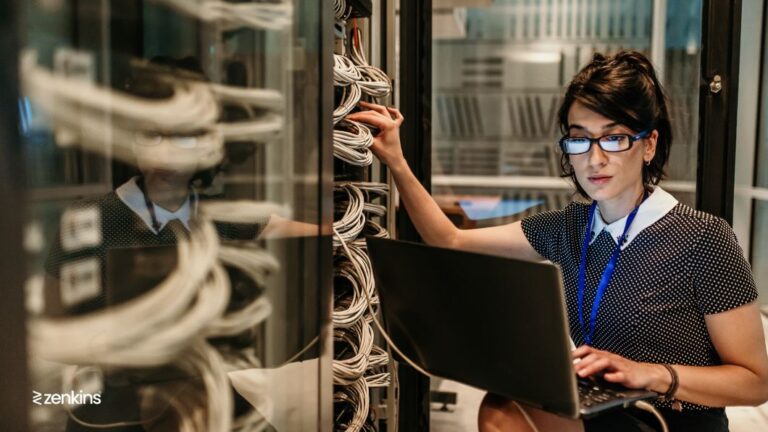Top 10 Skills in Demand for IT Staffing in 2023
Introduction
Table of Contents
Welcome to the digital battleground of 2023, where technology is not just a tool, but a lifeline. In this ever-evolving landscape, the demand for skilled IT professionals has reached a crescendo. The pace of innovation is swift, and businesses are clamoring for the best talents to navigate the complex web of codes, algorithms, and data. It’s not just about hiring IT staff anymore; it’s about harnessing the power of the right skills. As we delve into the realm of IT staffing, let’s unravel the enigma of the Top 10 Skills in Demand for 2023, peering into the very heart of the tech revolution.
IT Staffing
At its core, IT staffing is the strategic process of hiring, managing, and deploying skilled IT professionals to meet an organization’s technological needs. This approach offers flexibility, agility, and expertise, allowing businesses to scale their operations without the burden of maintaining a full-time, in-house IT team. The benefits are vast: reduced costs, access to specialized skills, increased productivity, and a focus on core business activities. However, IT staffing is not without its challenges. Finding the right talent amidst fierce competition, ensuring cultural fit, and staying abreast of ever-changing technologies are hurdles that businesses must overcome.
Top 10 Skills in Demand
Artificial Intelligence and Machine Learning (AI/ML)
Artificial Intelligence and Machine Learning are the architects of the future. AI/ML systems simulate human intelligence processes, learning and improving over time. Their applications range from chatbots and virtual assistants to predictive analytics and fraud detection. Companies like Google and Amazon have harnessed AI/ML to enhance user experience, optimize supply chains, and personalized recommendations, propelling them to the zenith of success.
The applications of AI and ML are as diverse as they are transformative. In healthcare, AI-powered systems analyze vast datasets, aiding in disease diagnosis and drug discovery. In finance, ML algorithms detect fraudulent transactions, ensuring the security of financial transactions. In customer service, chatbots equipped with AI engage users in natural conversations, enhancing user experience. In autonomous vehicles, AI processes sensory inputs, enabling cars to navigate without human intervention.
The benefits of AI/ML are multifaceted. They lead to increased efficiency, automating mundane tasks and freeing human resources for creative and strategic endeavors. These technologies enhance accuracy, minimizing errors that human counterparts might make. They improve customer experiences, offering personalized recommendations and efficient problem-solving. Moreover, AI/ML systems have the ability to process and analyze vast amounts of data at speeds far beyond human capabilities, leading to insights that drive business decisions.
Cloud Computing
Imagine a world where the constraints of physical hardware vanish, where information flows seamlessly, and businesses operate on a global scale without worrying about server rooms or maintenance costs. Welcome to the realm of Cloud Computing, a revolutionary technology that has redefined the way we store, process, and manage data.
Cloud Computing has revolutionized the way businesses operate. It enables the storage, processing, and management of data over the Internet. AWS, Microsoft Azure, and Google Cloud Platform are pioneering this domain. The benefits include cost-efficiency, scalability, and enhanced collaboration. Companies like Netflix and Airbnb rely on cloud technology to deliver seamless services, even amidst colossal user demands.
The applications of cloud computing are as diverse as the businesses and individuals utilizing it. For businesses, cloud computing offers scalable and cost-effective solutions. Companies can host their websites, applications, and databases in the cloud, ensuring high availability and performance. Cloud platforms also enable seamless collaboration; teams spread across continents can work on projects in real time, fostering productivity and creativity. Moreover, cloud computing powers Software as a Service (SaaS) applications, allowing users to access software applications via the internet without installation, saving time and resources.
For individuals, cloud computing simplifies daily tasks. From storing and sharing documents on platforms like Google Drive and Dropbox to streaming music and movies on services like Spotify and Netflix, cloud technology has become an integral part of our digital lives. It ensures that information is accessible from any device with an internet connection, promoting mobility and convenience.
Cybersecurity
In an era where data is more valuable than gold, cybersecurity is paramount. It’s the shield that protects our digital world, ensuring that our data remains private, our transactions secure, and our identities intact. In an age where technology permeates every aspect of our lives, understanding the essence of cybersecurity is not just crucial; it’s imperative. Cybersecurity experts safeguard systems from cyber threats, ensuring data integrity and user privacy. Their expertise is invaluable in financial institutions, healthcare, and e-commerce. Companies like IBM and Cisco have fortified their digital fortresses, ensuring customer trust and operational continuity.
Cybersecurity permeates every sector of society. In the business realm, it safeguards sensitive corporate data, customer information, and intellectual property. Financial institutions rely on robust cybersecurity measures to protect transactions and prevent unauthorized access to accounts. Healthcare organizations secure patient data, ensuring privacy and compliance with regulations like the Health Insurance Portability and Accountability Act (HIPAA). Governments employ cybersecurity strategies to protect national security interests, critical infrastructure, and sensitive information.
On an individual level, cybersecurity is paramount. It secures our online identities, banking transactions, and personal communications. Antivirus software, firewalls, secure passwords, and encryption techniques are some of the tools and practices employed to enhance individual cybersecurity.
DevOps
DevOps is a set of practices, principles, and cultural philosophies that aim to automate and integrate the processes of software development and IT operations. DevOps is not merely a methodology; it’s a cultural shift that unites development (Dev) and operations (Ops) teams, fostering communication, collaboration, and integration throughout the software development lifecycle. It streamlines development cycles, ensuring rapid and reliable code deployment. Companies like Netflix and Etsy have embraced DevOps, achieving faster time-to-market and unmatched reliability, even during massive traffic surges.
DevOps practices find applications across various stages of the software development lifecycle. During the planning phase, DevOps emphasizes collaboration between developers and operations teams, ensuring that infrastructure requirements are considered from the beginning. In the coding phase, developers write code collaboratively, using version control systems that enable multiple developers to work on the same project simultaneously. Automated testing is a crucial aspect of DevOps, ensuring that code changes do not introduce new bugs or issues.
The deployment phase in DevOps involves continuous integration and continuous delivery (CI/CD) pipelines. Continuous integration ensures that code changes from multiple developers are integrated into a shared repository regularly, avoiding integration conflicts. Continuous delivery automates the process of deploying code changes to production or staging environments, allowing for rapid and reliable releases. Continuous monitoring and feedback loops are essential in DevOps, enabling teams to detect and address issues promptly, ensuring optimal system performance and user satisfaction.
Blockchain Technology
Blockchain technology, famed for its association with cryptocurrencies, has far-reaching applications. It offers decentralized, secure, and transparent solutions for various industries. From supply chain management to voting systems, companies like IBM and Walmart have leveraged blockchain, enhancing efficiency, trust, and traceability.
Blockchain technology finds applications in a multitude of sectors, each harnessing its unique properties to solve diverse problems. In finance, Blockchain facilitates fast and secure cross-border transactions, eliminating the need for intermediaries like banks and reducing transaction costs. Smart contracts, self-executing contracts with the terms of the agreement directly written into code, automate and ensure the enforcement of agreements in various fields such as real estate and supply chain management.
In healthcare, Blockchain ensures the integrity and security of patient records, allowing authorized parties to access accurate medical histories efficiently. It is also used to trace the production, shipment, and delivery of pharmaceuticals, ensuring the authenticity of drugs and combating counterfeiting. In supply chain management, Blockchain provides end-to-end visibility, enabling real-time tracking of products from manufacturers to consumers, reducing fraud, and ensuring the authenticity of products.
Internet of Things (IoT)
The Internet of Things connects devices and systems, enabling them to communicate and share data. IoT finds applications in smart homes, healthcare, and industrial automation. Companies like General Electric and Philips have integrated IoT, enhancing efficiency, reducing waste, and creating seamless user experiences.
The applications of IoT are as diverse as the sectors it permeates, reshaping industries and enhancing various aspects of our lives. In healthcare, IoT devices like wearable fitness trackers and remote patient monitoring systems enable continuous health tracking. These devices collect data on vital signs, physical activity, and medication adherence, empowering individuals and healthcare providers with valuable insights for personalized care.
In smart homes, IoT technology controls lighting, heating, and security systems through smartphones or voice commands. Smart thermostats optimize energy usage, smart refrigerators manage grocery lists, and intelligent cameras enhance home security. In agriculture, IoT sensors monitor soil conditions, crop health, and weather patterns, enabling precision farming techniques. Smart agriculture ensures optimal resource utilization, increases crop yield, and promotes sustainable farming practices.
In industrial settings, IoT-enabled sensors and actuators enhance operational efficiency and predictive maintenance. These devices monitor machinery, detect anomalies, and trigger alerts before equipment failures occur, reducing downtime and maintenance costs. In transportation, IoT facilitates smart traffic management, predictive maintenance for vehicles, and autonomous vehicles that navigate without human intervention, improving road safety and congestion.
Data Science and Big Data
Data Science and Big Data deal with the analysis of vast, complex datasets. Data scientists extract valuable insights, aiding decision-making processes. Companies like Facebook and LinkedIn utilize Big Data to personalize content, target advertisements, and improve user engagement, driving their revenue and user satisfaction.
The applications of Data Science and Big Data are diverse, touching nearly every sector of the economy. In healthcare, Data Science analyzes patient records, predicts disease outbreaks, and enhances medical research. Big Data facilitates genomic research by processing vast amounts of genetic data, leading to advancements in personalized medicine and treatment.
In e-commerce, Data Science drives recommendation engines, providing personalized product suggestions to customers based on their preferences and behaviors. Big Data helps online retailers optimize their supply chains, analyze customer feedback, and predict market demands, enabling efficient inventory management and customer satisfaction.
In finance, Data Science and Big Data are used for fraud detection, algorithmic trading, credit risk assessment, and customer segmentation. These technologies analyze large volumes of financial data in real-time, identifying patterns and anomalies that are vital for decision-making in the fast-paced world of finance.
Mobile App Development
In a mobile-first world, mobile app developers create applications for smartphones and tablets. They enhance user experience and brand engagement. Companies like Airbnb and Uber owe a significant part of their success to intuitive, user-friendly mobile apps, enabling seamless interactions and transactions.
The Process of Mobile App Development:
Mobile app development involves several key stages, each crucial to the creation of a successful application:
- Idea Generation: The process begins with brainstorming ideas for the app. What problem does it solve? Who is the target audience? What features should it have? These questions shape the concept of the app.
- Market Research: Researching the market helps developers understand user needs and preferences. Analyzing competitors’ apps provides insights into market gaps and areas for innovation.
- Design: App designers create wireframes and prototypes, outlining the app’s layout, features, and user interface. User experience (UX) and user interface (UI) design are pivotal for engaging user interactions.
- Development: Developers write the code for the app, choosing appropriate programming languages (such as Java, Swift, or Kotlin) based on the platform (iOS, Android, or cross-platform) and app requirements.
- Testing: Rigorous testing ensures the app functions as intended, free from bugs and glitches. Testing includes usability testing, performance testing, and security testing.
- Deployment: The app is published on app stores (like Apple’s App Store or Google Play Store) where users can download and install it on their devices.
- Maintenance and Updates: Post-launch, developers continually monitor the app’s performance, addressing user feedback and releasing updates to add new features or fix issues.
User Experience (UX) Design
UX designers focus on enhancing user satisfaction and usability by improving the accessibility, ease of use, and pleasure in the interaction between users and products. Companies like Apple and Google prioritize UX design, creating visually appealing, intuitive interfaces that keep users engaged and loyal.
The Essence of User Experience (UX)
- Empathy: Understanding the users’ perspective is the foundation of UX Design. Empathizing with their needs, frustrations, and goals allows designers to create experiences that resonate with users on a deeper level. User personas and empathy maps are tools used to visualize and internalize user needs.
- Simplicity: The elegance of UX Design lies in simplicity. Clear and straightforward interfaces enhance usability. Designers prioritize essential elements, streamline navigation, and eliminate unnecessary complexities, ensuring that users can accomplish tasks with minimal effort and confusion.
- Consistency: Consistency breeds familiarity and trust. UX Design maintains consistency in elements such as colors, fonts, buttons, and navigation across the interface. Consistent design patterns create a cohesive user experience, allowing users to predict how the interface will behave in different contexts.
- Feedback: Providing feedback is essential for user engagement. Interactive elements should respond to user actions, indicating that their input has been recognized. Feedback can be visual, auditory, or haptic, confirming successful interactions or alerting users about errors or completion of tasks.
- Accessibility: Inclusive design ensures that digital experiences are accessible to users of all abilities. UX Designers consider factors such as color contrast, readable typography, keyboard navigation, and screen reader compatibility, making interfaces usable for people with disabilities.
Quantum Computing
Quantum Computing is the frontier of computational power. It utilizes quantum bits (qubits) to perform complex calculations at unprecedented speeds. Although in its nascent stages, companies like IBM and Google are investing heavily in quantum computing, aiming to revolutionize industries ranging from drug discovery to cryptography.
Quantum computing holds the potential to revolutionize various fields by solving problems that are practically impossible for classical computers. One of the most significant applications is in cryptography. Quantum computers can break widely used encryption schemes, prompting the development of quantum-resistant cryptographic algorithms to secure digital communications in the future.
In the realm of drug discovery and material science, quantum computing can simulate the behavior of molecules and materials at the quantum level. This simulation capability can lead to the discovery of new drugs, materials, and catalysts, accelerating scientific research and innovation.
Quantum computing also has implications for optimization problems, machine learning, and artificial intelligence. Complex optimization tasks, prevalent in logistics, finance, and supply chain management, can be solved exponentially faster using quantum algorithms. Additionally, quantum machine learning algorithms promise faster data analysis and pattern recognition, enabling advancements in artificial intelligence applications.
Future of IT Staffing
The future of IT staffing is a tapestry of innovation and adaptability. As technologies advance, the demand for specialized skills will skyrocket. Remote work and gig economies will reshape the workforce landscape, allowing businesses to tap into global talent pools seamlessly. Upskilling and reskilling will become integral, ensuring professionals stay relevant amidst technological shifts. Moreover, the integration of AI in recruitment processes will streamline candidate selection, matching the right skills with the right opportunities swiftly and efficiently.
Conclusion
In the intricate dance between humans and technology, the demand for IT professionals is unyielding. The top 10 skills in demand for IT staffing in 2023 serve as beacons guiding businesses through the digital labyrinth. As we stand at the crossroads of innovation, embracing these skills is not merely an option; it is a necessity. The companies that grasp this reality, and understand the pivotal role of these skills, are the ones destined for greatness. They will ride the wave of technological advancement, shaping industries, and redefining possibilities.
The future of IT staffing is not just bright; it’s luminous with potential, waiting for the right minds to unlock its secrets and lead us into an era where the fusion of human intellect and cutting-edge technology knows no bounds. So, equip yourself with these skills, for in this digital age, the journey to success begins with the right code, the perfect algorithm, and the unwavering spirit of innovation.




